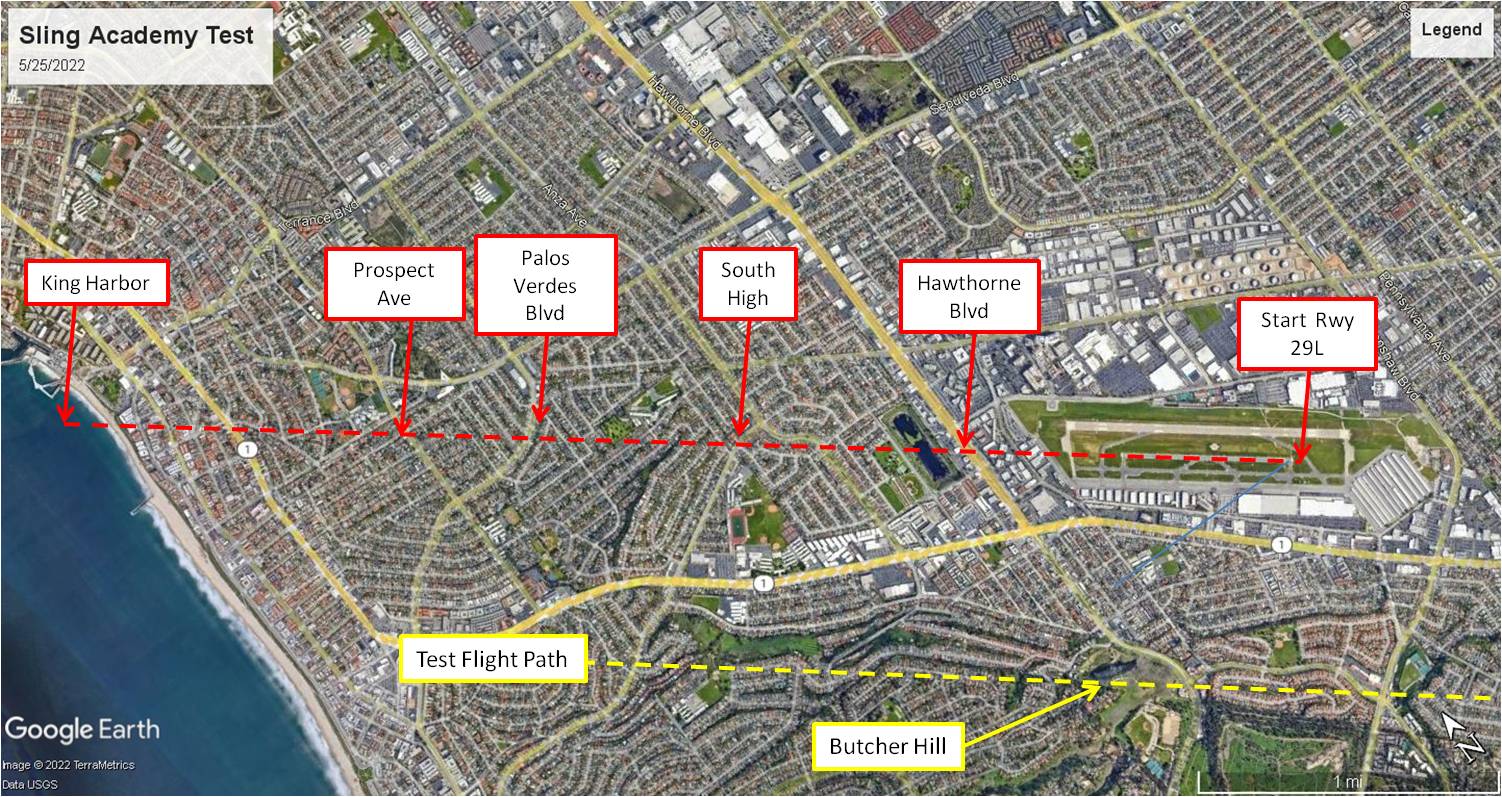

The Sling Pilot Acedemy makes approximately half of all takeoffs and landings at Torrance Airport. They are acutely aware of their effects on the neighbors. The Academy currently has policies that reduce those effects significantly:
The Academy continues to evaluate other procedures and policies that could further reduce their footprint.
On May 25, 2022, the Academy performed a number of test flights to measure the noise generated by their standard training aircraft, the Sling-2-NGT. Although the Academy had already taken many steps to minimize their noise footprint, they wanted to evaluate whether noise could be further decreased by raising the pattern altitude of their operations.
Methodology:
The aircraft selected, Sling-2-NGT N747VA, was typical of the training fleet at the Academy and was loaded to simulate
a typical training flight with a student and instructor.
The test flights were made over Butcher Hill, where the maximum noise levels were recorded for each flight. Aircraft altitude and engine RPM were downloaded from the aircraft's electronic flight instrument system and correlated with the times the aircraft passed over the recording points.
Discussion:
A major source of aircraft noise is the propeller. As propeller tip speed approaches the speed of sound, the noise it
generates increases. The greater the distance from the propeller, the lower the noise one perceives.
|
Traffic patterns are used by the control tower and the pilot to sequence each aircraft into existing traffic and to permit adequate spacing from preceding aircraft for a safe landing. The length of upwind and downwind legs are adjusted during flight to allow for this to occur. Thus, any aircraft's path over the ground is not always the same. At airports like Torrance Airport, the "standard" traffic pattern consists of a climb on runway heading in the upwind leg to approximately 300 feet below traffic pattern altitude and then the turn to cross wind leg is imitated. The climb then continues to standard pattern altitude (1,100 feet MSL at Torrance) in the cross wind and downwind legs. |
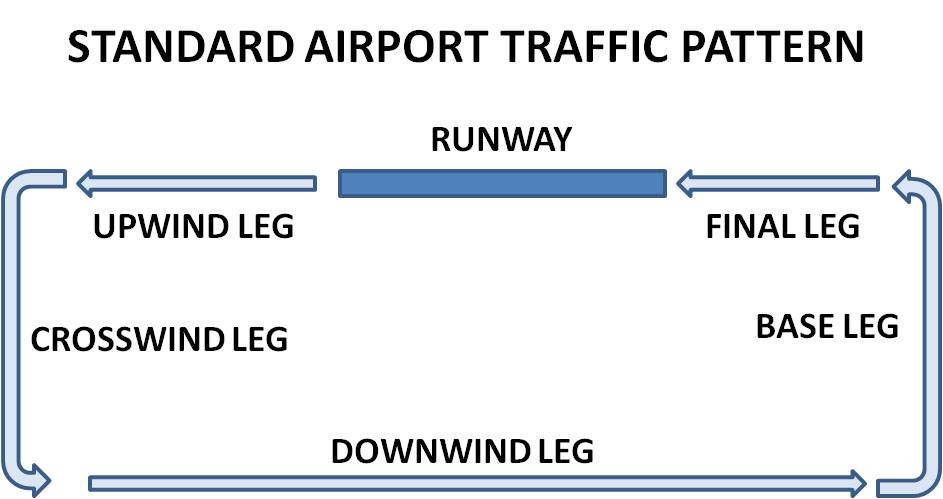 |
In the south traffic pattern at Torrance, this sometimes puts an aircraft over populated hillside areas (which are nearly 300 feet MSL) while it is still climbing at high power. Therefore, the Academy prefers their students to use the north runway whenever possible. If the south runway is the only possibility, the Academy requires that their aircraft reach pattern altitude and reduce propeller RPM before making the cross wind turn. However, this requires a longer upwind leg prior to making the cross wind turn as compared to the standard pattern configuration. This makes the ground track over populated areas even longer than when the "standard" pattern is flown. It also places the cross wind leg farther from the airport.
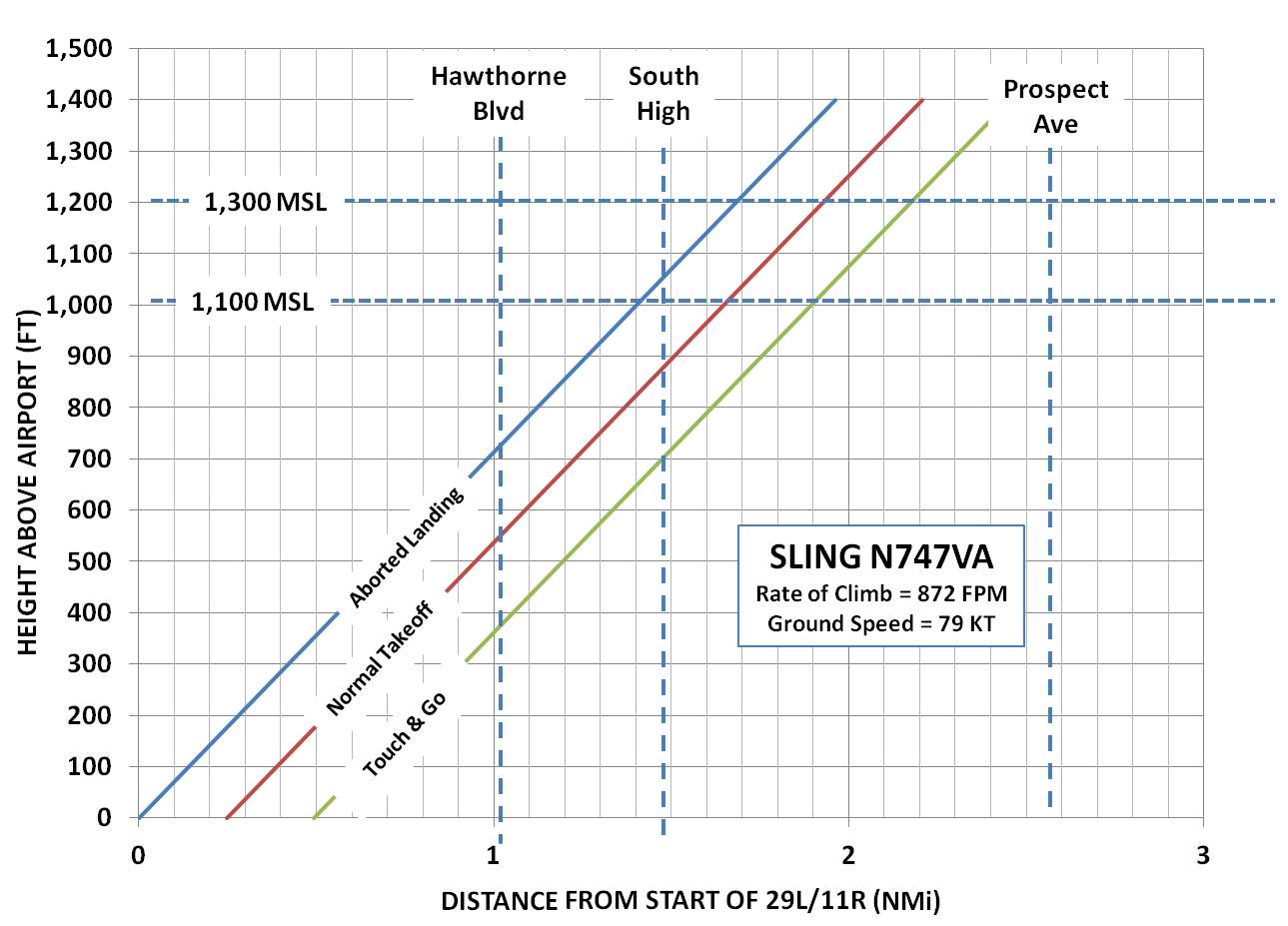 |
This graphic depicts the point at which the test aircraft could reach a specific altitude when climbing straight out from the runway. During a touch-and-go operation, it would fly significantly past South High and almost halfway to Prospect Avenue before reaching a 1,300 MSL pattern altitude. The control tower, on several of the flights, questioned why the pilot was not turning cross wind at 800 MSL. Later conversations with the tower personnel revealed that they found it very difficult to maintain visual contact with the aircraft as it got further from the airport (and therefore they could not assure separation of aircraft). This adds a safety concern for using higher altitudes in the pattern. The Sling NGT is capable of climbing fairly steeply. Other training aircraft using Torrance Airport may not have that capability--some may only be capable of climbing at 500 feet per minute. These aircraft would not reach 1,300 MSL until almost to King Harbor, thus tracing a much longer ground track over a populated area while at a high power setting and making visual contact from the control tower very difficult--if not impossible. |
|
Sound recordings during the test were made at three locations--all under or close to the test aircraft flight path. The most reliable measurements were made atop Butcher Hill (Recording Point #2). This location is the highest in the area (432 feet MSL) and was several hundred feet from any structures that could reflect sound and from streets or other human activity that would distort the readings. The test aircraft flew directly over Butcher Hill each time. |
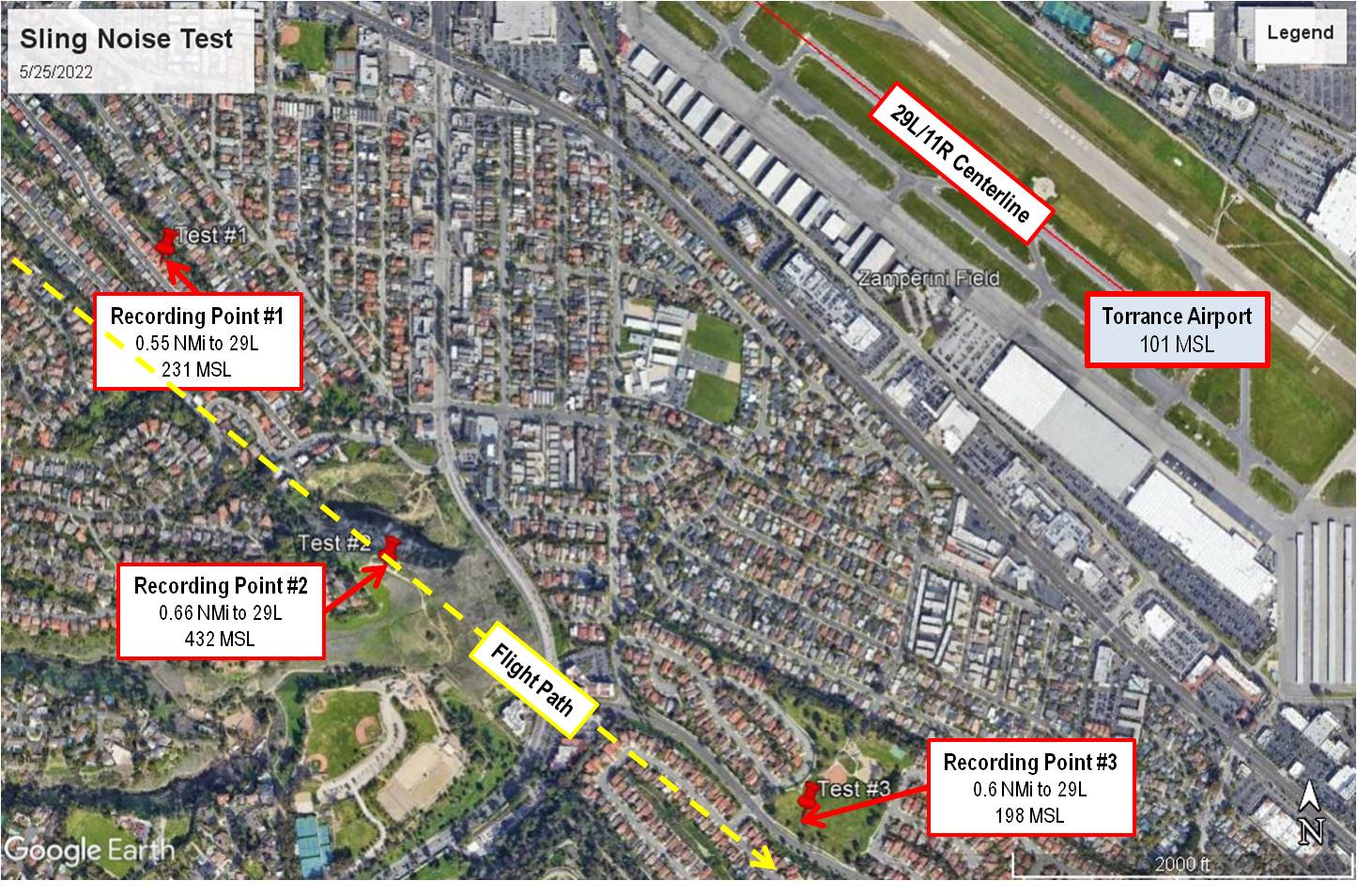
|
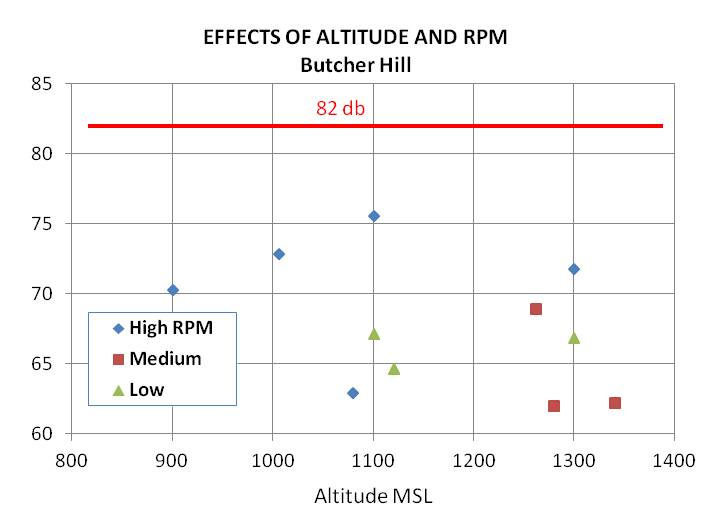
|
As this graphic illustrates, it was more difficult to discern the small effects of altitude on noise. This graphic clearly does show that reduced RPM results in significantly lower sound readings. The graphic also shows that the Sling training aircraft do not exceed the 82 db(A) limit--even at lower altitude and high RPM.
|
Geographical references:
